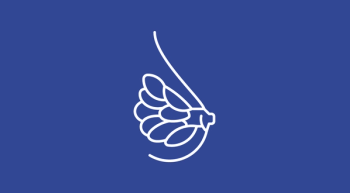
Defining and Quantifying the Oncology Nurse Navigator Role

Deidra Hamilton, MSN, RN, OCN, ONN-CG, recently presented on how cancer institutions can clearly define the role of a nurse navigator to prevent scope creep and use gap analysis and metrics to showcase the value of a navigator in their program.
The role of a nurse navigator adds tremendous value to oncology care programs, shared Deidra Hamilton, MSN, RN, OCN, ONN-CG, navigation director/oncology services, Sarah Cannon, at a recent presentation at the Oncology Nursing Society Bridge virtual conference.
Her presentation, “Measuring the Impact of Nurse Navigation,” which was addressed to hospital administrators, current nurse navigators, and oncology nurses who might be considering a career shift towards navigation, highlighted the importance of understanding and quantifying the value of the oncology nurse navigator position.
What is Nurse Navigation?
Oncology nurse navigators, sometimes referred to as “ONNs” are professional registered nurses with oncology specific clinical knowledge. These individuals assist patients alongside all steps of their cancer care journey, offering education and resources to help promoted informed decision making and access to quality health and psychosocial care. Nurse navigators help patients, families, and caregivers circumvent barriers in the healthcare system.
“A nurse navigator is a medical system advocate and helps patients and their families understand each part of the cancer journey while compassionately supporting physical, emotional, and spiritual needs,” summarized Hamilton.
The value of a nurse navigator comes from their ability to identify and address potential barriers to care. A patient’s needs can also keep changing or evolving. For example, a patient may have transportation covered for 1 month, but find that she is unable to driver herself to treatment the following month. A nurse navigator can intervene by arranging transportation or providing useful resources for those patients.
“Navigators are often super detectives,” described Hamilton, about the tenacity of a nurse navigator, “always on the search for another resource to help their patients.”
Google can be an invaluable resource to nurse navigators. Hamilton explained that google holds a lot of great answers to difficult questions on copay assistance and other relevant factors in cancer treatment navigation. She shared that many nurses keep bookmarks of their favorite resources and also create word documents and excel sheets with links to valuable online resources. “The best nurse navigators are like a dog on a bone,” she said.
For new navigators, Hamilton encourages them to lean into the social work and case management colleagues at their facilities. She also emphasized that nurse navigators will often be the first to know some of the more intimate details regarding a patient concerns, “such as a patient wanting to make sure she has all of her hair because her daughter is getting married next month and doesn't want to look like a ‘cancer patient’ in the wedding pictures.”
“Ensuring that a patient's wishes are addressed also helps the patient be more compliant with their treatment plan,” she said. “Encouraging patients to talk about their treatment wishes and goals of care can not only help patients formulate questions for their providers, it can also help to promote advanced care planning that respects the patient's wishes.”
Because nurse navigation required such specialized knowledge, Hamilton recommended certifications such as ONN-CG, OCN, or CBC. Requiring these certifications within 2 to 3 years of hire can be a great way to incentivize new hires to acquire the skills they need to facilitate patient care.
Preventing Scope Creep
According to Hamilton, nurse navigators are sometimes viewed as mythical creatures and it is not uncommon to hear “we don't know what they do, but they sure do get it done.”
Consequently, scope creep is an issue that nurse navigators often confront. Scope creep is “when works starts to extend or creep beyond what was originally agreed.” This typically occurs when there is not a clear definition or job description for the role.
She reminded the audience that “although being a jack of all trades is often seen as a compliment, in this case, when a navigator dabbles in work that isn't part of their scope, the dabbling pulls time away from helping more patients, which can have downstream negative effects.”
For navigators who feel that their role has become a little derailed, Hamilton advises taking an assessment of the situation by keeping a notepad and keeping track of all accomplished tasks for an entire week. “This will help to identify any navigation workflow and scope of practice issues,” she said. “Track the activities that the navigators are currently doing. Do these activities fit with the job description?”
Clearly Defining the Role of a Nurse Navigator at Your Institution
Unfortunately, the specific role of the navigator can sometimes have different understandings across different institution. This can have a negative impact if the patient doesn’t truly understand the meaning of a navigator. At Hamilton’s institution, Sarah Cannon, there is a clearly defined workflow of the responsibilities of an oncology nurse navigator.Navigators initiate a relationship with patients at diagnosis and continue to provide support throughout the trajectory of care, checking in at key benchmarks, such as treatment visits, or post operatively, and end navigation at survivorship or end of active treatment, whichever comes first.
She urged administrators to utilize the oncology nursing society navigator core competencies to establish clear standard operating procedures for the navigators and to help prevent the common “scope creep” that they often face.
Gap Analysis
A gap analysis can be a useful way for institutions to showcase the value of their program. For effective results, analyses should be conducted before the program begins, as well as at regular checkpoints following implementation.
The five basic steps of a gap analysis are as follows:
- Identify the current state of the navigation program,
- Identify and define best practice needed to reach the desired state of the navigation program,
- Measure how close the organization is to achieving the desired state of the navigation program,
- Conduct an analysis of the strength, weakness, opportunities, and threats. Conduct a stakeholder analysis, and
- Develop and implement an action plan to achieve desired outcomes.
Hamilton provided an example of an institution that has 2d mammograms but no tomo mammogram units: an institution that is conducting imaging but could potentially provide a higher level of service.
“After identifying gaps, which in this example includes the lack of a breast cancer navigator, the next step would be to identify and define the best practice needed to reach the disk
sired state of the navigation program,” she explained. “Our example facilities desired state includes a full-time disease specific breast oncology nurse navigator. Perhaps our next step is to analyze the breast cancer volume at our facility and to reach out to our stakeholders to discuss their thoughts. Once we have collected our data, we can develop an action plan to implement to achieve getting that full time breast specific navigator.”
Metrics: Tell Your Story with Data
While providing metrics might seem intimidating, they are a valuable resource for showcasing the various responsibilities a navigator might face daily, oftentimes metrics are able to effectively communicate to stakeholders why there is a need for an additional nurse navigator within a certain institution, Hamilton explained.
For nurses who are not familiar with gathering metrics, she informed audiences that the Academy of Oncology Nurse and Patient Navigators released a navigation metrics toolkit with 35 evidence-based metrics relevant not just to patient care, but that demonstrate the value and sustainability of the role. “It will walk you through quality standards, key stakeholders, as well as implementing the right metrics for your navigation program, all helping you to avoid that dreaded scope creep,” she said.
Furthermore, “navigators who do not collect and report even simple metrics may struggle to demonstrate the value of their program,” emphasized Hamilton. “They may find their roles diminished, or even questioned by administrators in the future. Demonstrating the value of navigation is part of the role and responsibilities of every oncology nurse navigator.”
Certain touchpoint metrics can include the number of times a navigator connects with a patient, increased patient compliance, and reduction of 30-day re-admissions. Patient satisfaction can be demonstrated with word-of-mouth referrals, as well as physician engagement, while growth can indicate that a maturation of the program and identification of patients. Improved timeliness can indicate superior program quality. No matter which metrics a program wishes to highlight, it is always useful to establish baseline data.
According to Hamilton, “the best metrics challenge your navigation program and drive practice change… When connecting to others, there are a few considerations to keep in mind. What is the story I'm trying to tell? Who is the audience? What are the key points in the data? Are there emotions involved? Is this idea affordable? Is there an ask? Do we need a policy or procedure?” she concluded. “Preparing a navigation dashboard to use to report out navigation outcome metrics helps to drive improvements, as well as elevates navigation important as well as elevates navigations importance to stakeholders.”
Reference:
Hamilton D. Measuring the Impact of Nurse Navigation. Presented at: Oncology Nursing Society Bridge; Sept 9-16, 2021; Virtual. https://ons.digitellinc.com/ons/live/player/1438
Newsletter
Knowledge is power. Don’t miss the most recent breakthroughs in cancer care.













































































